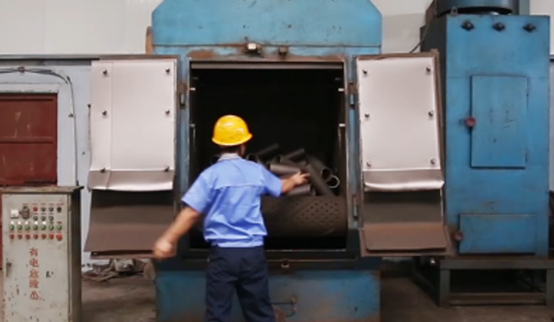 Afrikaans
Afrikaans  Albanian
Albanian  Amharic
Amharic  Arabic
Arabic  Armenian
Armenian  Azerbaijani
Azerbaijani  Basque
Basque  Belarusian
Belarusian  Bengali
Bengali  Bosnian
Bosnian  Bulgarian
Bulgarian  Catalan
Catalan  Cebuano
Cebuano  Corsican
Corsican  Croatian
Croatian  Czech
Czech  Danish
Danish  Dutch
Dutch  English
English  Esperanto
Esperanto  Estonian
Estonian  Finnish
Finnish  French
French  Frisian
Frisian  Galician
Galician  Georgian
Georgian  German
German  Greek
Greek  Gujarati
Gujarati  Haitian Creole
Haitian Creole  hausa
hausa  hawaiian
hawaiian  Hebrew
Hebrew  Hindi
Hindi  Miao
Miao  Hungarian
Hungarian  Icelandic
Icelandic  igbo
igbo  Indonesian
Indonesian  irish
irish  Italian
Italian  Japanese
Japanese  Javanese
Javanese  Kannada
Kannada  kazakh
kazakh  Khmer
Khmer  Rwandese
Rwandese  Korean
Korean  Kurdish
Kurdish  Kyrgyz
Kyrgyz  Lao
Lao  Latin
Latin  Latvian
Latvian  Lithuanian
Lithuanian  Luxembourgish
Luxembourgish  Macedonian
Macedonian  Malgashi
Malgashi  Malay
Malay  Malayalam
Malayalam  Maltese
Maltese  Maori
Maori  Marathi
Marathi  Mongolian
Mongolian  Myanmar
Myanmar  Nepali
Nepali  Norwegian
Norwegian  Norwegian
Norwegian  Occitan
Occitan  Pashto
Pashto  Persian
Persian  Polish
Polish  Portuguese
Portuguese  Punjabi
Punjabi  Romanian
Romanian  Russian
Russian  Samoan
Samoan  Scottish Gaelic
Scottish Gaelic  Serbian
Serbian  Sesotho
Sesotho  Shona
Shona  Sindhi
Sindhi  Sinhala
Sinhala  Slovak
Slovak  Slovenian
Slovenian  Somali
Somali  Spanish
Spanish  Sundanese
Sundanese  Swahili
Swahili  Swedish
Swedish  Tagalog
Tagalog  Tajik
Tajik  Tamil
Tamil  Tatar
Tatar  Telugu
Telugu  Thai
Thai  Turkish
Turkish  Turkmen
Turkmen  Ukrainian
Ukrainian  Urdu
Urdu  Uighur
Uighur  Uzbek
Uzbek  Vietnamese
Vietnamese  Welsh
Welsh  Bantu
Bantu  Yiddish
Yiddish  Yoruba
Yoruba  Zulu
Zulu Understanding the Function and Importance of Accessory Belt Idler Pulleys in Engine Systems
The Role of the Accessory Belt Idler Pulley in Automotive Systems
In modern automotive engineering, various components work together to ensure the efficient operation of vehicles. Among these components, the accessory belt idler pulley may not be the most glamorous part, but it plays a critical role in the overall function of the engine's accessory drive system. Understanding the importance of the accessory belt idler pulley can help car owners appreciate its contribution to their vehicle's performance and maintenance needs.
What is an Accessory Belt Idler Pulley?
The accessory belt idler pulley is a small yet significant mechanical component in the vehicle's engine. It functions primarily to support and guide the serpentine or accessory belt, which is a vital part of the engine's accessory drive system. The serpentine belt connects various engine accessories such as the alternator, power steering pump, air conditioning compressor, and water pump. This single belt streamlines the operation of multiple components, enhancing the efficiency of the engine.
The idler pulley serves to maintain proper tension and alignment of the belt. It ensures that the belt functions smoothly without slipping or misaligning, which can lead to premature wear or even failure of the belt and the auxiliary components it drives. Additionally, the idler pulley absorbs some of the vibrations generated by the engine, contributing to quieter operation.
Importance of Proper Functioning
A functioning accessory belt idler pulley is pivotal for several reasons. First and foremost, it ensures that the belt maintains adequate tension. If the tension is too loose, the belt can slip, leading to inefficiencies like poor alternator performance (resulting in weak battery charging) or malfunctioning power steering. Conversely, if the belt is too tight, it can cause excessive wear on both the belt and the components it drives.
accessory belt idler pulley

Moreover, a malfunctioning idler pulley can lead to significant problems. Common symptoms of a failing idler pulley include unusual noises, such as squeaking or grinding, which indicate that the bearings within the pulley may be wearing out. Additionally, if the pulley is damaged, it can cause belt misalignment, which ultimately leads to the belt coming off or breaking.
Maintenance and Replacement
Given its important role, regular inspection and maintenance of the accessory belt idler pulley are essential. Mechanics often recommend checking the condition of the idler pulley and the serpentine belt during routine maintenance services, such as oil changes. It is important to look for any signs of wear, such as cracks in the belt or unusual wobbling or play in the pulley.
If a problem is detected, timely replacement of the idler pulley can prevent more extensive damage. Replacing the idler pulley and the serpentine belt at the same time is often advisable, as these components generally have similar lifespans.
Conclusion
In conclusion, while the accessory belt idler pulley may appear to be a minor component in the grand scheme of an automobile's engine, its role is far from insignificant. By maintaining the proper tension and alignment of the serpentine belt, the idler pulley ensures that various critical engine functions operate smoothly and efficiently. For car owners, understanding the function and importance of this component can lead to better maintenance practices and prevention of potential vehicle issues. Regular checks and timely replacements of the idler pulley can ultimately contribute to the longevity and dependability of a vehicle, showcasing the importance of even the smallest components in automotive design.
-
Revolutionizing Conveyor Reliability with Advanced Rubber Lagging PulleysNewsJul.22,2025
-
Powering Precision and Durability with Expert Manufacturers of Conveyor ComponentsNewsJul.22,2025
-
Optimizing Conveyor Systems with Advanced Conveyor AccessoriesNewsJul.22,2025
-
Maximize Conveyor Efficiency with Quality Conveyor Idler PulleysNewsJul.22,2025
-
Future-Proof Your Conveyor System with High-Performance Polyurethane RollerNewsJul.22,2025
-
Driving Efficiency Forward with Quality Idlers and RollersNewsJul.22,2025





























